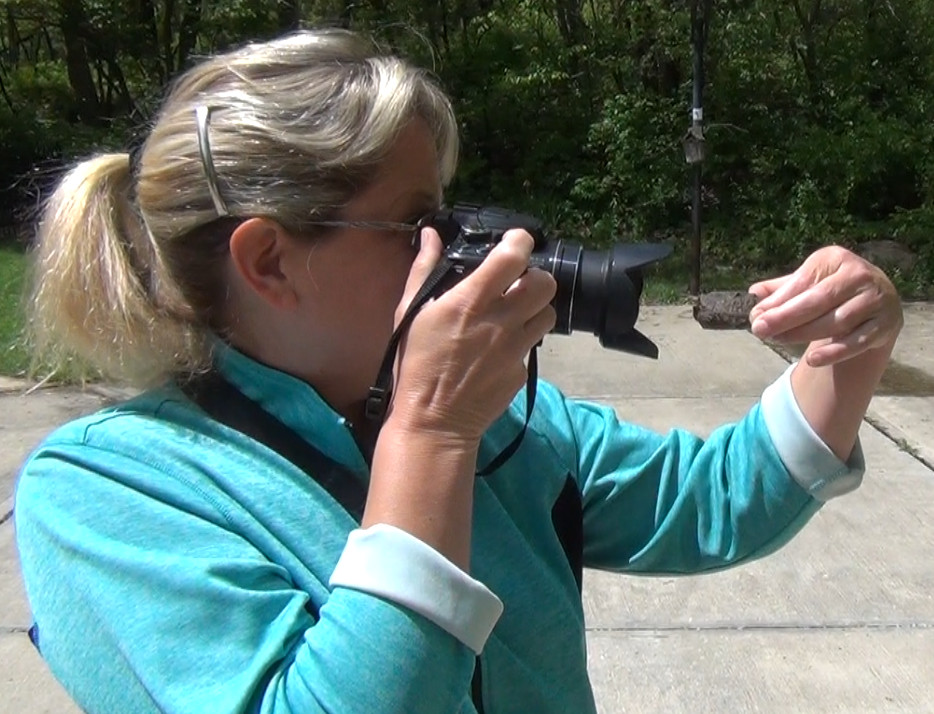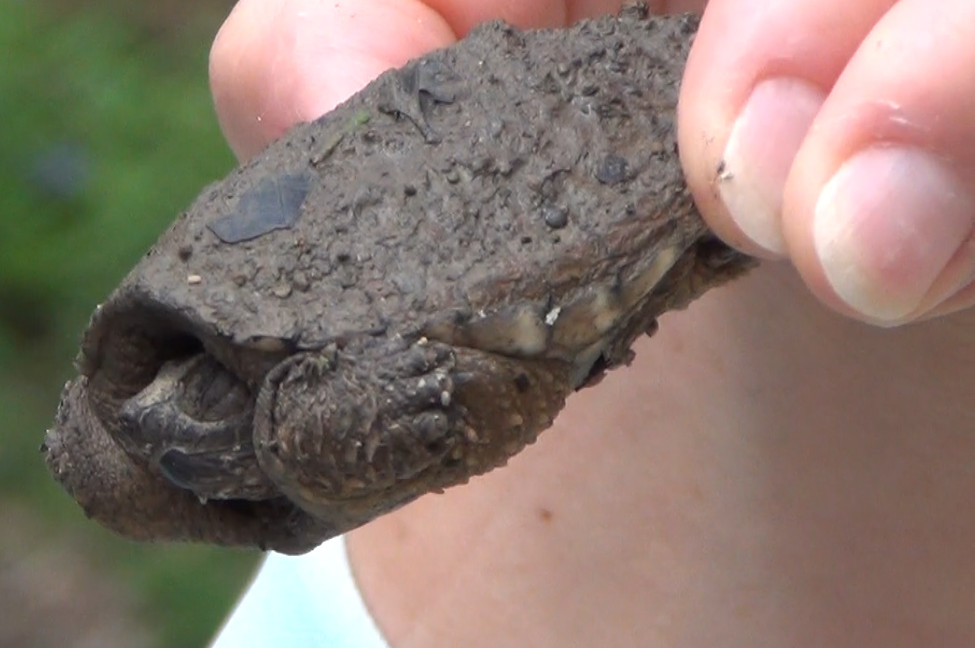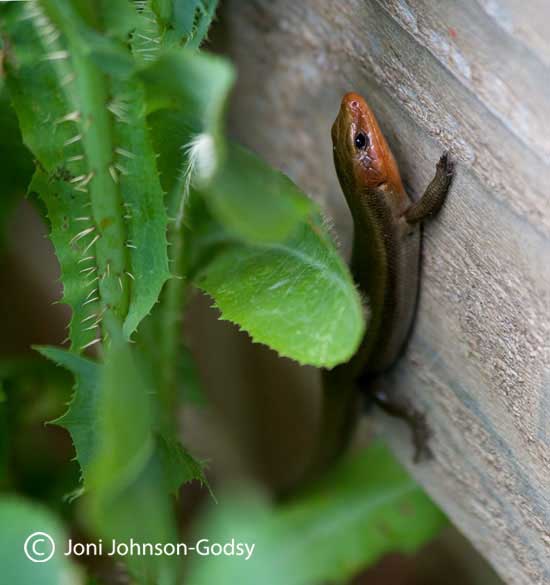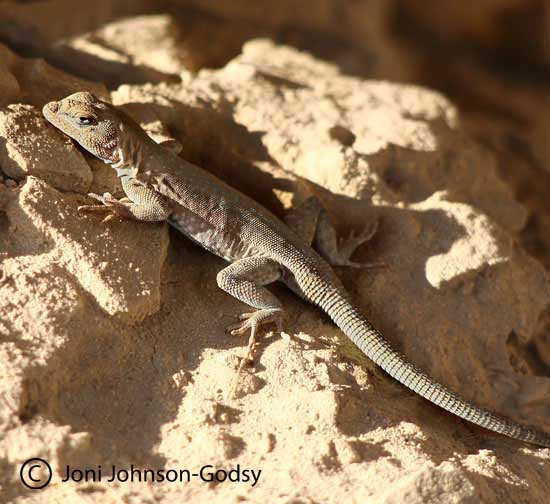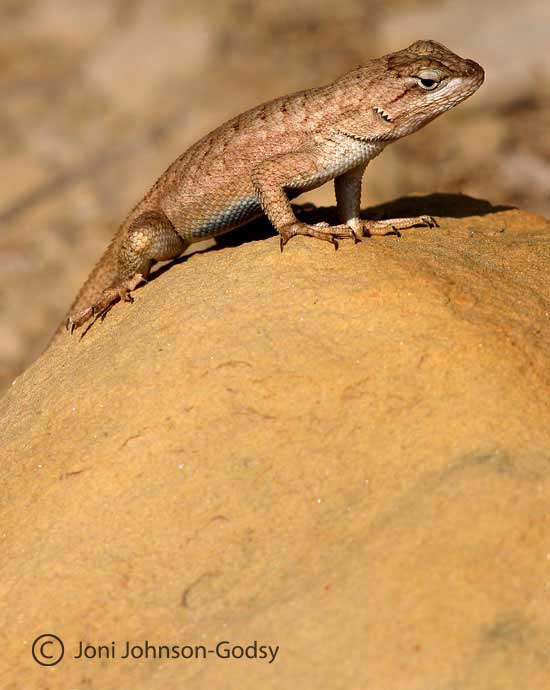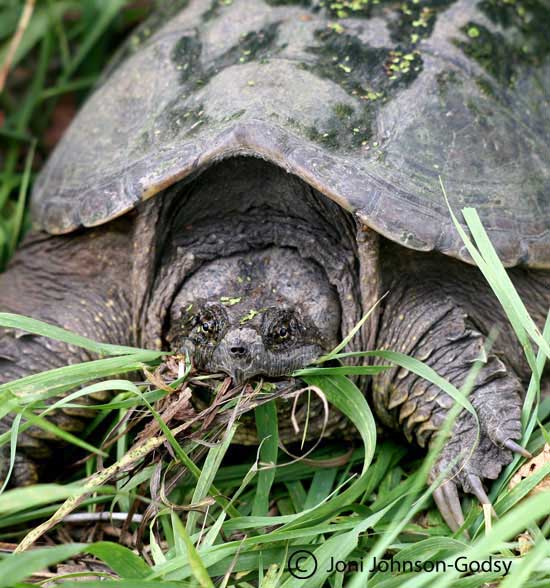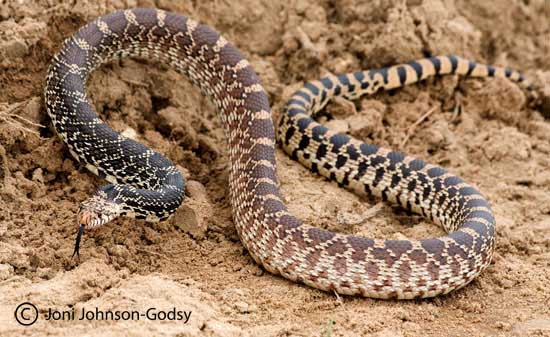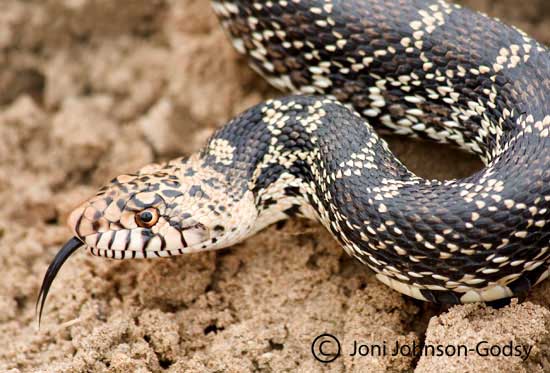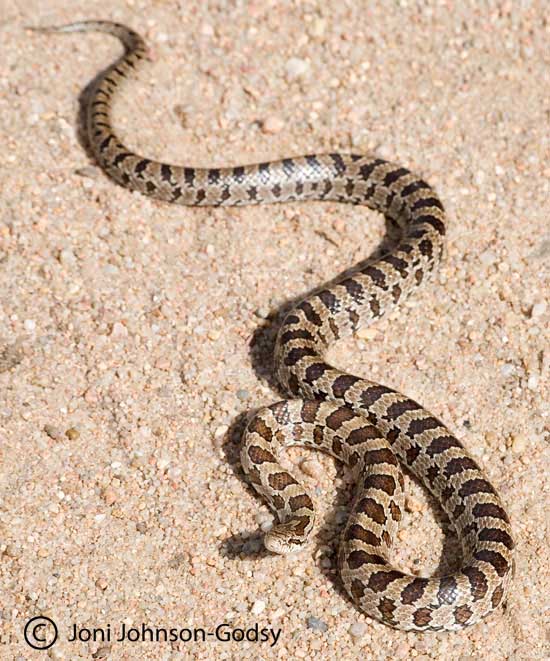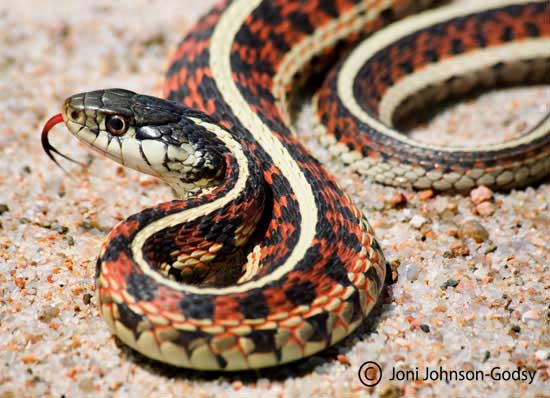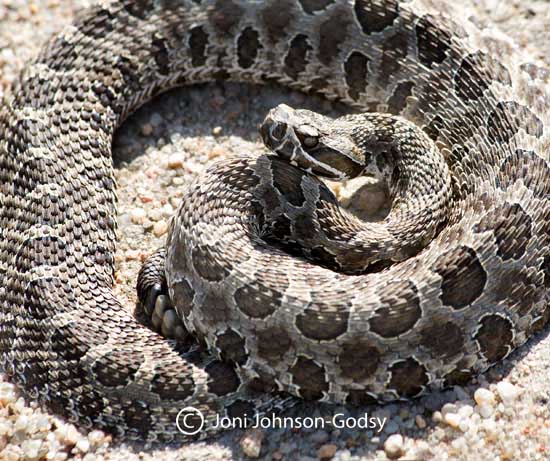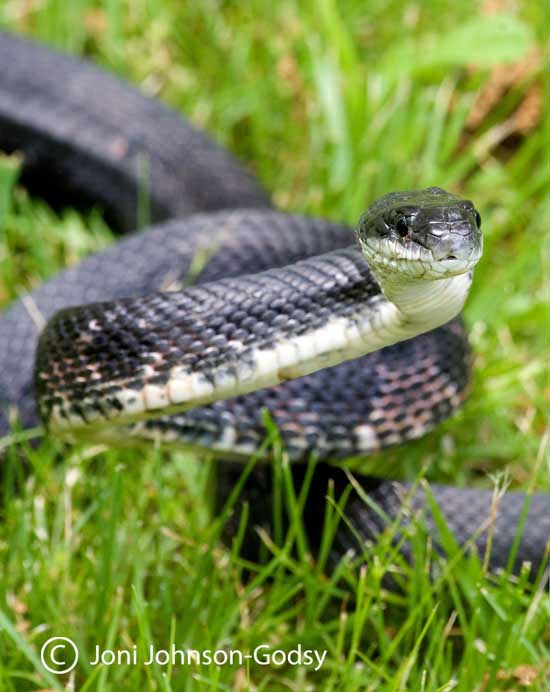A short video of wildlife artist Joni Johnson-Godsy doing a photo shoot of a baby snapping turtle. This little fellow is pretty cute.
Category Archives: Reptiles
New Opportunities
There is nothing quite like being out on water in a quiet lake cove, with your only company being that of a beloved dog, and the wildlife that calls the lake home.
I recently purchased a kayak. I am wondering why I didn’t do this years ago. Not only is a kayak a whole lot of fun, but it also affords a wildlife painter new opportunities for gathering that much needed photographic reference. Animals and birds naturally gravitate towards water edges. And most animals and birds are not nearly as afraid of a boat drifting quietly by as they are of a human being tromping through noisy leaf litter in a woods. Getting close to your subjects is a real advantage of being in a boat driven forward simply by your own desire and a few arm and shoulder muscles.
Both of our dogs like to ride in the kayak. Below Pawsome shares a wonderful morning with me out on the water.

In the early mornings the coves are aglow in shafts of sunlight, accentuating the steam that rises when water is warmer than the crisp morning air of autumn.
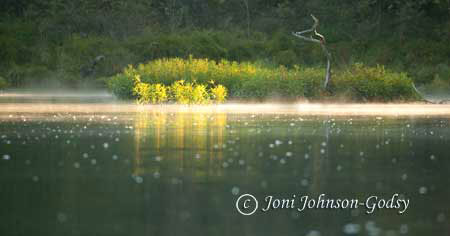
There are many rewards for those willing to rise and shine early…
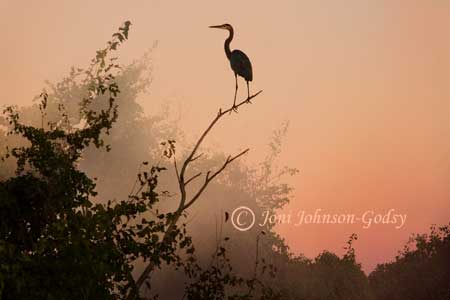
A muskrat slowly cruises by…

A Flicker eyes me from above…

Sunlight makes the autumn woodland glow…
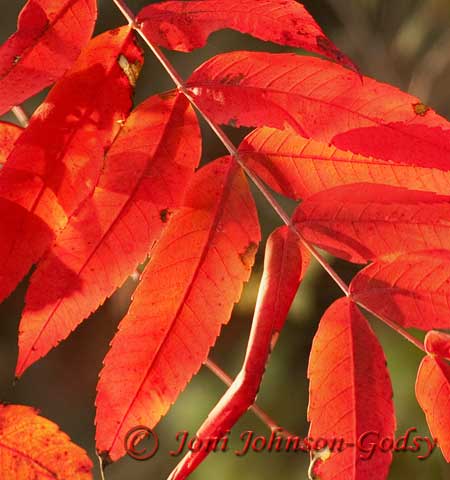
A Painted Turtle has decided that on this stump, there is only room for one. The snake just to the right will have to find his own island for sun bathing…

More paddling reveals more surprises…

There is nothing like having a camera pointed at you while “doing your business.” A young Double-crested Cormorant finds a “rest stop” between fishing expeditions…
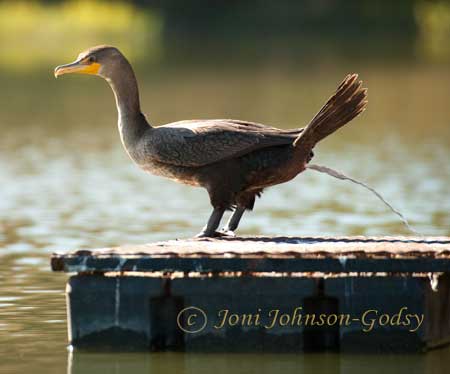
Three heads are always better than one…
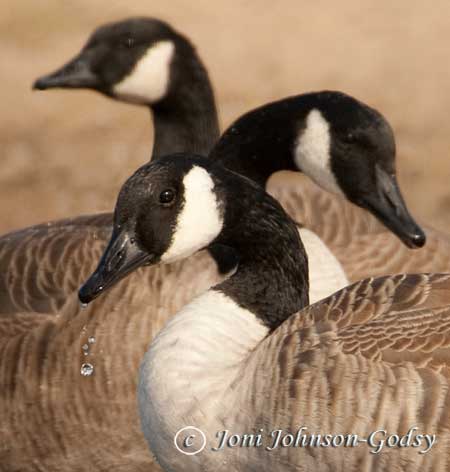
A Zipper Spider perches on her glowing web…

Mr Heron allows me to get very close when I’m in my kayak…

Two does came down to the water’s edge for a drink. I don’t think they knew quite what to make of that floating red-orange thing out on the water…

That was FUN! When can we go again???

Turtle Time
My dog Pawsome found a box turtle in the garden today when we stepped outside at lunch time. He was a bit shy at first but eventually “came out of his shell” and went about his business.
The step from the garden onto our concrete patio is a BIG one if you are a turtle!

Feeling a bit perplexed and out of place, he looked me over for a bit…

And then he decided that it was time to explore our deck.

On the smooth surface of the deck, one can build up some real “speed”… COOL!

These purple flowers sure look interesting. Wonder what one might find in here?
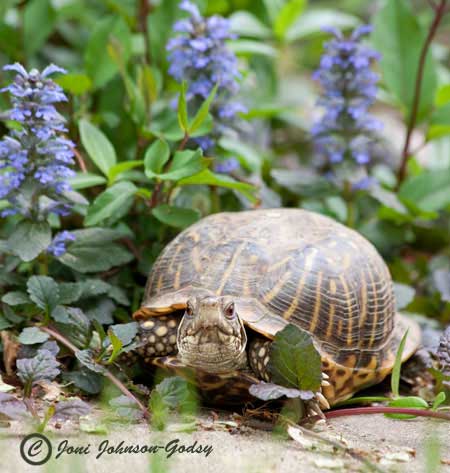
Oh, I see this little Skink likes purple flowers too…
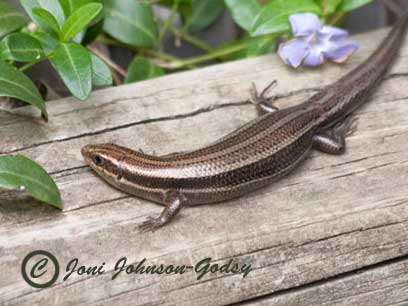
An ant came out from under the turtle’s shell. When the turtle noticed it, he went from a poky little chap into a streamlined hunter (well, as streamlined as a turtle will ever be). The chase was on as he “raced” after the ant…

In the end it wasn’t the ant that he was after, but rather the vegetable matter that the ant was carrying. GULP! And the ant went along on his way.
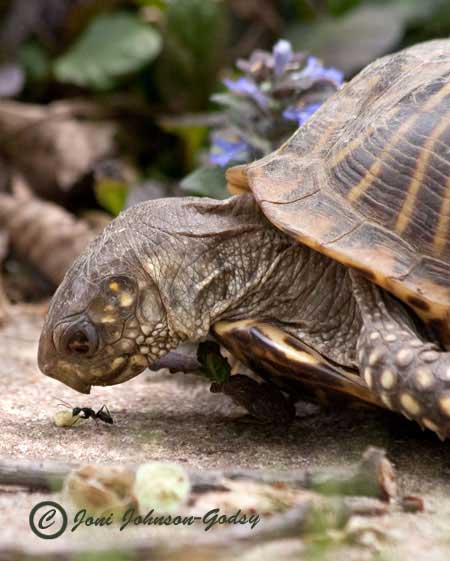
Hmmm…wonder what is over there?

This pretty thing sure looks tasty…
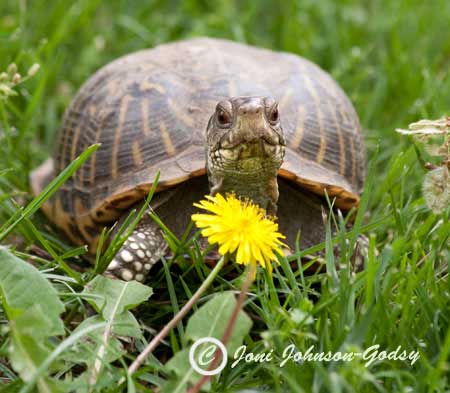
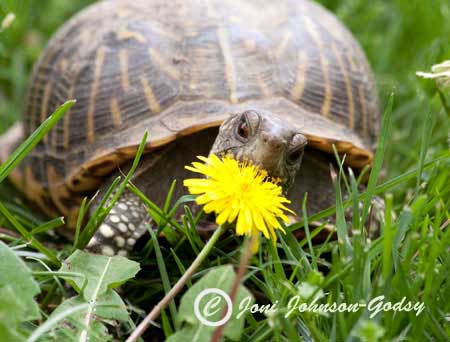
Chomp! Gulp…
(This by the way, is why we DO NOT use weed killers on our property!)

Ahhhhh! Lip smackin good!
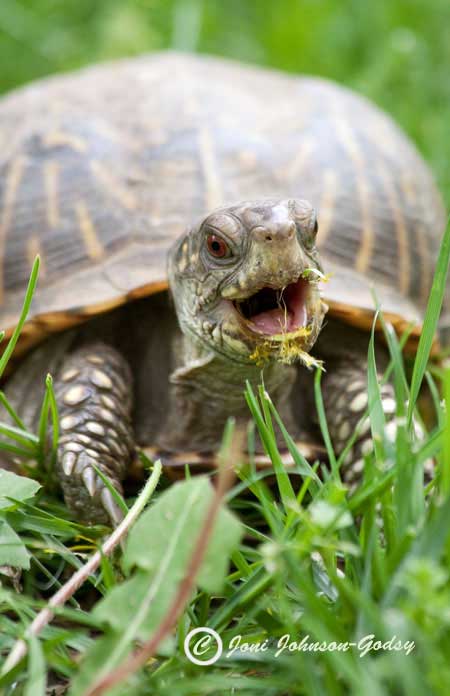
There is nothing like a nice dandelion mustache to show for a good meal…

Time to mosey….see ya!
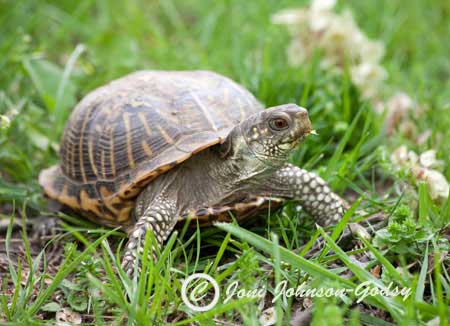
SOME BOX TURTLE FUN FACTS:
Box turtles can live to be 100 years old.
Box turtles are becoming increasingly threatened in the wild due to habitat loss (woodlands being converted into subdivisions, roads and farms) and the pet trade. Pet traders are pulling them from the wild and selling them at alarming rates. Over half of them die in captivity. It is difficult to adequately meet the nutritional and physiological needs of a box turtle in captivity. Most are anemic and sickly. So teach little Johnny that the best place for the box turtle he has just found… is exactly where he found it!
A box turtle stays within about a half mile range of where it was born, all it’s life. If it is caught and released somewhere else, it will spend the rest of it’s life trying to find it’s way back to it’s original range.
Female box turtles lay eggs in late spring, usually around 4-6. Their reproductive cycle is very slow. They only need to mate every four years and are able still to lay fertilized eggs each year.
The next time you see a box turtle, ask him how old he is. His first birthday could date back to the time when automobiles were first invented!
Emerging after a loooong winter…
One of the surest signs that winter is indeed over is the emergence of cold blooded critters. Reptiles and amphibians appear, often a bit sluggish from shaking off winter and from the cool temperatures of spring. The sun is a critical factor in warming up their systems enough to gain energy for normal function.
Starting in April, the nearby ponds are filled with a chorus of bullfrogs.


The eyes of a bullfrog are very pretty I think…

And who cannot smile when looking into the face of a box turtle?

A garter snake coils up and gives me a face-off. She is ready for action.

This snapping turtle looks like he has had too much to drink on his night out (perhaps too much to eat too)…

A beautiful Ribbon Snake is out and about looking for lunch.

Face to face with a Ribbon Snake…

This little chap creates one of my favorite sounds found in nature, a chorus of tree frogs. He is perched on our hose holder.

I ran into this male Broad-headed skink on my walk in our woods yesterday. What a beautiful creature!

I will never understand how this Black Rat Snake is able to scale straight down a brick wall. He can seemingly defy gravity.

A standoff at the O.K. Corral
House Wrens have occupied the bluebird house that is attached to a post at the edge of the woods in front of our house. This morning I could tell by the sweet, exuberant chattering coming from inside the house that the babies are very nearly ready to fledge. The parents have been busy continuously bringing the incredible amounts of food needed for them to grow. This creates almost constant commotion around the little house.
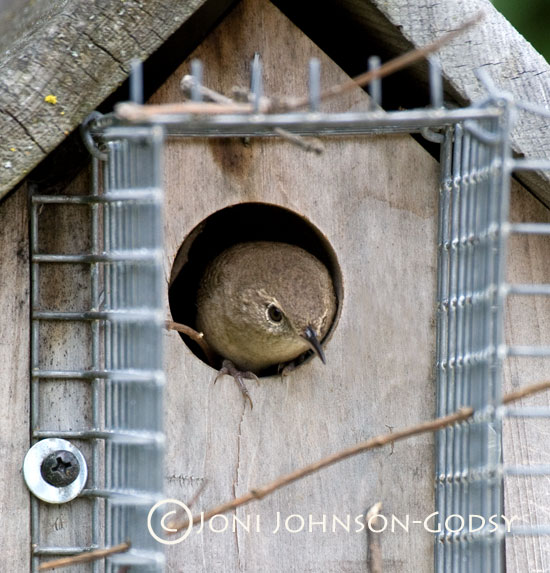
This morning I was out with the dogs and heard one of the little wren parents having an absolute FIT. I looked up to see her on top of the wire raccoon guard just outside the entrance to her nest. She was jumping back and forth wildly. Her desperate calls rang out through the woods.
Naturally I had to investigate. Although I was already pretty close to the birdhouse, I knew that I was not the one upsetting her. I have been around this house quite a bit, and she has not been overly bothered by me. I wandered over and looked inside the tiny house entrance. What I saw when I looked in was NOT what I expected!
Filling the round entrance of the house was what at a glance looked like a dark thick rope that was curled just enough that the round part was sticking out of the hole. It didn’t take long for me to realize that a snake had somehow made it’s way up the post and into the house. I could smell an unpleasant odor coming from inside. Things were not looking good for the wrens.
It is my policy to not interfere with nature. I like wrens. I also like snakes. Everyone out there has a tough living to make. It is my privilege to watch any scenario as it plays out in nature as an unbiased bystander, even when the end result is a sad one for one of the parties. But something struck me on this day. Maybe I was in an unusually sentimental mood, I don’t know. I decided to remove the front of the house and see what was going on inside. All this time the little wren continued screaming from nearby tree branches.
(Below) this is the scene that was unveiled when the front of the bird house came off. There was one dead baby on top of the nest. The entire contents in the box, including the snake was motionless.
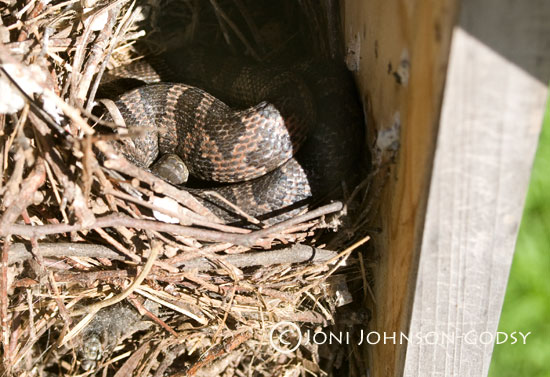
After some time passed, I stepped back a bit. Now exposed, the snake was feeling pressure to better hide himself or leave. He slipped out through a slit in the back of the house which is likely how he got in there in the first place. The brave little wren came charging down to deal with the situation herself. She was amazingly tenacious. Songbirds are fiercely devoted and protective parents.
(Below) A protective parent and a hungry serpent are in a temporary standoff. The wren’s wildly focused aggression and the newly exposed nature of the nest eventually discouraged the snake.
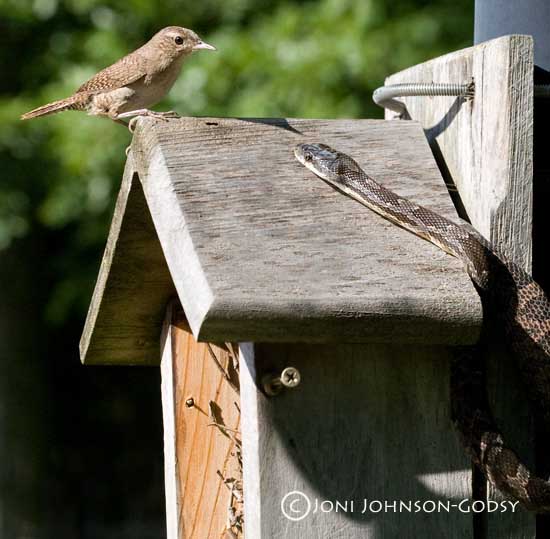
The snake decided to retreat back inside of the house for safety from his aggressive little foe. He hid behind an old wasp nest. But this was the wrong move to make. The wren just turned her volume up a few more notches. He was close to her babies again and this simply was not acceptable!
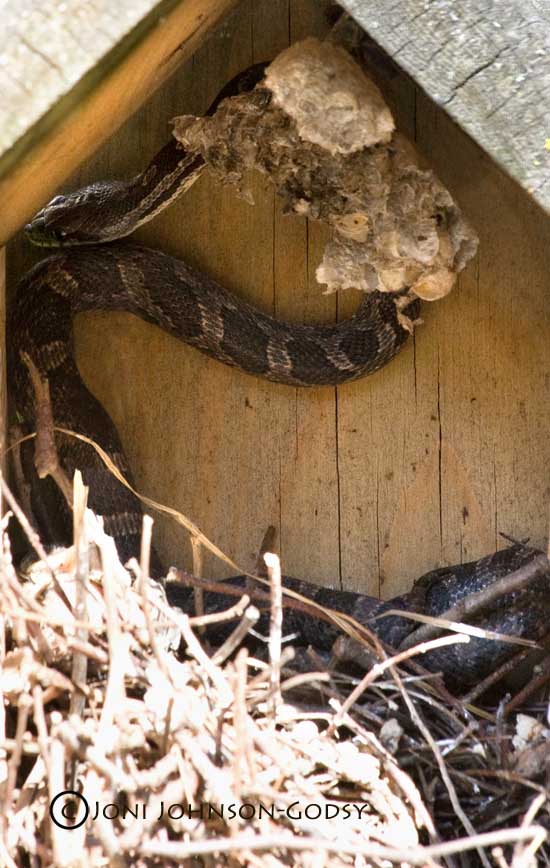
In time the snake finally found himself outmatched and decided to get the heck outta Dodge. I didn’t notice until I looked at the pictures of him on my computer that his eyes were milky. This means that he has out grown his clothing and is getting ready to shed his skin.
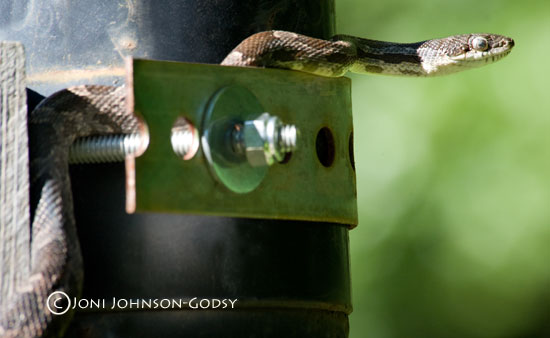
After the snake left all was quiet. For a long while I had surmised that the snake had already constricted all of the babies by the time I got there. But slight movement way down into the nest revealed that some of the babies were still in there and were alive. I quickly removed the dead one (and pitched it into the woods to become food for perhaps the same snake?) and promptly placed the front of the house back on. It will be interesting to see if any baby wrens fledge from this brood after the standoff at the O.K. Corral…
Leaping Lizards…and a very cute face
It’s reptile and amphibian season. That means it’s lizard season.
Many of the lizards we see in this part of the country are wide spread throughout the eastern half of the US. Because of our wooded surroundings, skinks are especially happy here, as there is much for them to eat. They seem to favor our decks. They are quick and agile little hunters. Now and then I find one skittling about during the warm days of summer.
This is a Broad Headed skink which is the largest of the eastern skinks. This is a male, who in breeding season has a red head. This particular animal is not fully mature. He will eventually grow larger and will loose the pale stripes on his sides. His little feet stick to the wooden decking like they are covered with glue.
The following fellow is a male Side Blotched lizard. I photographed him in north-western Colorado last summer. He too is very quick and blends in quite well with his sandy surroundings. In late summer when this photo was taken, his colors become less intense.
This is a female Prairie/Plateau Lizard. She cocks her head from side to side to watch for tiny insects. Like all lizards, she uses the sun to regulate her body temperature.
What in the world does this next guy have to do with lizards? Absolutely nothing. But being a reptile, I guess he kind of fits in. I included him for one simple reason. This snapping turtle has an ADORABLE face!
I found this guy crossing the creek at the front of our property. He was minding his own business, as turtles do. When I encountered him and he encountered me, he became a bit frustrated and snapped up a chunk of grass. This photo reminds me of my husband at meal time! 🙂
High Winds and Serpents
It is no secret that wind is a major force in Kansas. Of course this state is famous for big black twirling funnels that make for great monsters in movies. Indeed we do have more than our share of tornadoes. But strong wind that is unaccompanied by storms is also quite common here too.
My husband and I took a recent weekend camping trip with friends to a wetland refuge in the middle of Kansas, which is in essence the middle of nowhere. We camped under a small stand of cottonwoods on a creek in the middle of the prairie. What we didn’t know when we left and were totally unprepared for, was the weather that was to come. By the middle of the first afternoon, the winds had picked up to 30-35 mph with gusts of 40-45 mph. By dark the temps were down to below freezing. It was not storming where we were, although we learned later that south eastern Kansas and Oklahoma were having devastating tornadoes.
It starts to become difficult to stand up in wind gusts of 40-45 mph. We were there to photograph wetland birds and other wildlife. Holding a camera still in whipping winds is challenging to say the least. And of course the birds we went there to see wanted no part of it. (The next day when the wind died down the birds reemerged in mass).
The stars of the day, who seemed unbothered by the wind, were snakes. I am simply fascinated by snakes. This place was a herpetologist’s dream. In less than 24 hours we saw five different species and that was without even looking for them. They seemed to be everywhere. I’ve included photos below of some of the species that we found. For anyone who is squeamish about snakes, I suggest that you scroll down to the next web log entry…
This stunning beauty is a large Gopher Snake, also referred to as a Bullsnake. This is a non-venomous species that catches rodents with constriction. The Bullsnake is considered to be the most economically beneficial snake in Kansas, consuming large quantities of rodents such as mice, rats, rabbits, pocket gophers and ground squirrels. He also enjoys an occasional bird egg.
A close up look at that pretty Bullsnake face…
The fellow below is a Northern Water snake. He is a lizard and frog eater…
This decorative serpent (below) is the Prairie Kingsnake. He is usually a secretive fellow, but we were fortunate to find him soaking up some rays on a sandy roadway.
Prairie Kingsnakes are non-venomous constrictors, and eat a variety of prey such as small mammals, lizards, frogs, birds and other snakes including venomous ones. They are immune to the venom of North American venomous snakes and such snakes will use methods other than striking to escape kingsnakes. This makes the Prairie Kingsnake VERY beneficial to farmers, as not only will this species rid the farmer of pests like rodents, but also of venomous snakes.
This red striped beauty is a common Garter Snake. This was not only by far the largest Garter snake I’ve ever seen (she was HUGE) but she was also the most foul tempered snake we encountered on our trip. This was a snake with an ATTITUDE. She was all puffed up and very strikey.
This venomous beauty is the gorgeous Massasauga Rattle Snake. The word Massasauga means “Great river mouth” in the Chippewa language. This is the smallest rattle snake species in Kansas, although this one was a pretty good size. We found a much smaller one later in the day.
Here is his pretty face…
This feisty beauty is a black rat snake. I found him prowling around very near a nest of baby Eastern Phoebes. Eastern Phoebes are small birds of the open grasslands and are fabulous insect eaters. This rat snake most likely had his eye on this next. But the Phoebes were resourceful enough to build their nest out of reach of even this most talented of climbers. So for the time being until the baby birds fledge, they are safe…at least for now….

